Join More Than 50,000+ Subscribers and get latest camera news and rumors
NEW CAMERA VIDEOS ON YOUTUBE
Download Our Android App
|
By admin, on May 24th, 2019
Panasonic is expected to announce a new camera on May 31. Rumor mills says that it’s a L-series related announcement, but we are still waiting for confirmed set of news from trusted sources.

BTW, Panasonic GH6 is also rumored to announce at the end of 2019, let’s see what coming up next.
We will update you soon as we get any new information.
Check out Ongoing Featured and Lightning Deals at Amazon.com | Amazon.UK | B&H Store
Follow us on our social pages FACEBOOK | TWITTER | INSTAGRAM, Or subscribe us via Email or Push Notification You Can also Download our Android App
By admin, on May 23rd, 2019

Fuji GFX100 Camera finally announced by Fujifilm officially. The camera features 102 Megapixel Medium Format CMOS sensor. Despite of having a Medium format sensor the camera also features In-body 5-axis image stabilization reduces shake by up to 5.5 stops according to CIPA.
The camera sensor is made on dual gain architecture, powered by a quad-core X-Processor 4 and offers a standard ISO range of 100-12,800. And expandable ISO range upto 50-102,400.
Fuji GFX100 Major Specification
- 102MP 43.8 x 32.9mm BSI CMOS Sensor
- X-Processor 4 Image Processor
- Removable 5.76m-Dot OLED EVF
- 3.2″ 2.36m-Dot Tilting Touchscreen LCD
- DCI 4K30 Video; F-Log Gamma & 10-Bit Out
- 5-Axis Sensor-Shift Image Stabilization
- 3.76m-Point Phase-Detection Autofocus
- ISO 100-12800, Up to 5 fps Shooting
- 16-Bit Raw Output, Multi Aspect Ratios
- Built-In Battery Grip, 2 x SD Card Slots
With Rock Solid DSLR body the camera weights 1.4kg. Don’t get worried about the card slots, the camera features twin SD card slots with UHS-II support, GFX100 also features USB 3.2 (Type-C), an external mic and headphones, a wired remote, and HDMI.
On Specification sheet it’s the camera carry 3.76 million phase-detect pixels spread across nearly 100% of the frame.
According to the claims made by Fujifilm the camera AF speed is 210% Faster than Fuji GFX 50R camera.
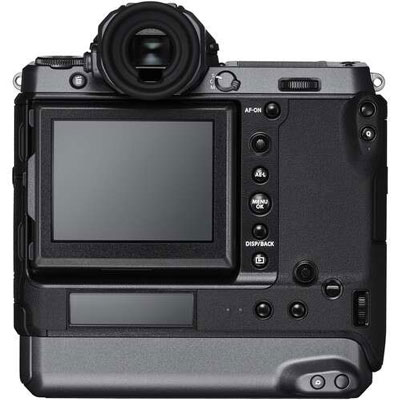
Let’s tallk about the video capabilities of Fuji GFX 100 camera. It can capture DCI and UHD 4K video at bit rates up to 400Mbps, with your choice of H.265 or H.264 codecs. It supports Fujifilm’s Eterna Film Simulation mode and can output 10-bit 4:2:2 F-Log video to an external recorder.
The GFX 100 Price – $9999
Buy now Fuji GFX100 from B&H Store
Fuji GFX 100 Full Specification
Click here to download the Fuji GFX 100 full specification pdf
Press Release Fuji GFX 100
FUJIFILM INTRODUCES THE GFX100, A GAME CHANGER IN DIGITAL CAMERA TECHNOLOGY AND CAPABILITY
-100+ megapixel sensor in a 55mm diagonal length large format offers highest resolution in the history of mirrorless cameras
-Fast, accurate autofocus with the world’s first phase detection system, 4K video capability, and in-body image stabilization in a large sensor format1.
Valhalla, New York, May 23, 2019 – FUJIFILM Holdings America Corporation today announced the upcoming release of its flagship GFX100 mirrorless digital camera, incorporating a newly-developed 102 megapixel (MP), 55mm diagonal length large format image sensor that is designed to deliver image clarity and capability previously unheard of in the photography and video industries.
The GFX100 features several ‘world firsts’ for a large format camera with an image sensor larger than the 35mm (full-frame) format: including its 102MP back-side illuminated sensor (BSI), in body image stabilization (IBIS) and on-board phase detection hybrid auto-focus (AF) with near 100% coverage. In addition to pioneering features, the GFX100 is fully equipped with Fujifilm’s unparalleled color reproduction technology and film simulations. Resulting from years of research and technological innovations, the GFX100 will provide photographers with exceedingly high-quality imagery and best-in-class camera responsiveness for filmmaking and photography in a simple-to-use large format system with a growing selection of lenses.
Offering large-format video capability, the GFX100 is the world’s first mirrorless digital camera with an image sensor of this size to offer 4K, 30p video recording capability (4:2:2 10-bit). These groundbreaking features make the GFX100 a camera of unparalleled innovation and versatility, fulfilling photography’s intrinsic mission of capturing and recording precious moments that may never be repeated with the utmost image quality.
Resolution Redefined: World’s First 100 MP BSI CMOS Sensor in a Mirrorless Camera
The GFX100 pairs a newly-developed back-illuminated 102MP CMOS imaging sensor with Fujifilm’s blazingly fast X-Processor 4 processing engine to create a combination capable of outputting 16-bit images with amazing color fidelity, rich shadow detail, and incredible dynamic range. Its back-illuminated structure promotes crisp image quality by bringing the exposure plane in extremely close proximity to the color filter array, which results in ultra-low noise levels and a native ISO of ISO 100.
1. First for a camera with image sensors larger than the 35mm full-frame format
Noteworthy Stability When It Matters: World’s First Five-axis IBIS in a Camera Featuring an Image Sensor Bigger than the 35mm Format
High-resolution image sensors require high-level stability to ensure image sharpness. With built-in 5-axis image stabilization, GFX100 users are reassured that vibrations won’t interrupt the capture process. The function offers up to 5.5-stop image stabilization (when using the GF63mmF2.8 R WR lens)2. The entire shutter unit is suspended with four springs to minimize the effect of shutter shock. This dramatically broadens the scope of situations where a user can hand-hold the camera and still enjoy the world of 100MP+ ultra-high resolution, pushing the boundaries of photographic expression.
Practical Auto-Focus for Large Format: World’s First On-Board Phase Detection Hybrid AF with approximately 100% Coverage
Compared to traditional medium format digital systems, the GFX100 raises the bar in AF performance by utilizing phase detection pixels across the sensor to help photographers obtain focus wherever they choose to position their subjects in the frame. With 3.76 million phase detection pixels, at approximately 100% coverage, near perfect auto-focus performance with speed and accuracy is now a reality for photographers needing optimum performance in subject tracking, face/eye detection and low-contrast environments. The effect is particularly notable when using fast prime lenses, achieving speed improvement of up to 210% over the conventional contrast AF system used in GFX 50R.
Pushing Creative Boundaries for Filmmakers: Large Format Camera with 4K video at 30p
With a sensor size of 43.9mm x 32.9mm, the GFX100 supports filmmakers in achieving their creative visions. The new sensor and processor combination support 4K video recording at 30p with a unique cinematic look. It’s now a breeze to explore shallow depth-of-field, wide tonal reproducibility and extra high ISO sensitivity, producing high- quality video footage with detailed textures while reproducing three-dimensional definitions and even capturing the atmosphere of the scene. With the ability to apply Fujifilm’s highly respected Film Simulations (including ETERNA cinema film simulation mode), record in F-Log Rec 2020, and capture 4:2:2 10-bit uncompressed footage through the HDMI port, GFX100 should certainly be coming soon to a screen near you.
Dust-resistant, Weather-resistant, Lightweight and Highly Robust Magnesium Alloy Body with Integrated Vertical Grip
Maximizing its use for even the toughest conditions, the GFX100 has weather sealing in 95 locations across the camera body and detachable EVF to ensure an exceptionally high level of dust and moisture resistance. Photographers will have the opportunity to capture moments in even the most remote locations as the GFX100 can maintain reliable operation even under tough natural conditions.
2. Based on CIPA standard. Pitch/yaw shake only. With GF63mmF2.8 R WR lens mounted.
Although it sports a large image sensor, the GFX100’s body is equivalent to that of a flagship 35mm full-frame DSLR camera in terms of dimensions (6.15” (W) x 6.44” (H) x 4.05” (D), measuring 1.93” at the thinnest part) and weight (approx. 3 lbs. including two batteries, memory card and EVF).
Designed for protection, the GFX100’s core imaging unit, consisting of the lens mount, image stabilization mechanism and image sensor, has been structured completely separate from the main body panels. This “double-structure” is designed to ensure a high level of precision and robustness while minimizing resolution degradation caused by external stress to the body. To maximize usability, the GFX100 incorporates a vertical grip, enabling effective use of in-body space.
Advanced Color Reproduction Technology, Delivering Astonishing Quality in Stills
The combination of the newly-developed image sensor and the fourth-generation X- Processor 4 processing engine means the camera supports the 16-bit RAW capture requested by many professional photographers seeking files that tolerate heavy post- processing. The GFX100 also features the newly-developed “Smooth Skin Effect” function, which automatically smooths the skin tone of the subjects, as is often performed in portraiture. It allows the photographer to skip a portion of post-processing work so that images captured with this function can be finished at an extremely high level of perfection, faster.
The GFX100 will be the flagship model of the GFX Series of mirrorless cameras, which have garnered strong praise from professional photographers and photo enthusiasts for their use of 55mm large format image sensor, measuring 55mm diagonally (43.8mm x 32.9mm) and providing approximately 1.7 times the area of the regular 35mm full-frame sensor.
The GFX100 digital camera body will be available on June 30, 2019 at a suggested retail price of USD $9,999.95 and CAD $13,299.99.
By admin, on May 23rd, 2019
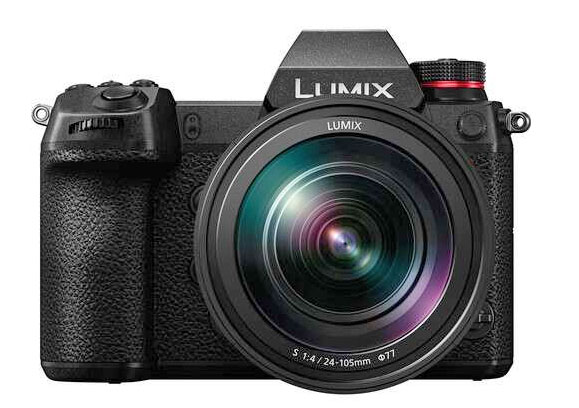
According to latest rumors, Panasonic is rumored to announce a new L-mount camera on May 31, 2019. The camera is Video oriented camera / it is said to be Cinematography dream gear.
Initial Set of Rumored Specification of upcoming L-Mount camera
Panasonic L-Mount Camera Rumored Specification
It’s L-mount
New Full Frame sensors
And so much more…
Cinematography dream gear.
We have to wait for more information, the information is coming from a low-credible source to take it as grain of salt.
Check out Ongoing Featured and Lightning Deals at Amazon.com | Amazon.UK | B&H Store
Follow us on our social pages FACEBOOK | TWITTER | INSTAGRAM, Or subscribe us via Email or Push Notification You Can also Download our Android App
By admin, on May 22nd, 2019
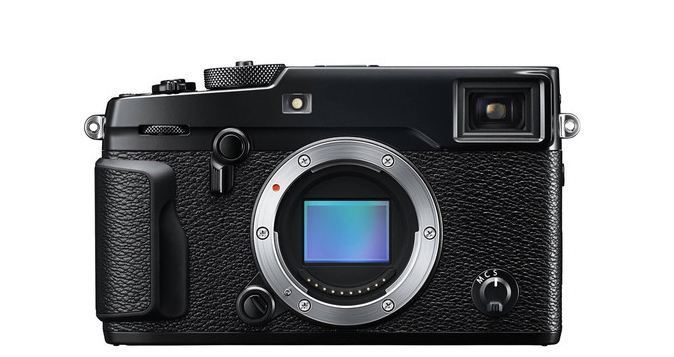
We have told you back on March 2018 that Fuji X-Pro 3 camera is coming with 26 MP X-Trans CMOS sensor.
When Fuji X-Pro 3 Camera is Coming ?
According to latest rumors Fuji X-Pro 3 camera is coming on October 2019.
We will update you soon as we get any new information.
See more about Fuji X-Pro 3 camera
Get Your Products through our affiliates – Amazon | B&H
Follow us on our social pages FACEBOOK | TWITTER | INSTAGRAM, Or subscribe us via Email or Push Notification You Can also Download our Android App
source Fujirumor
By admin, on May 21st, 2019
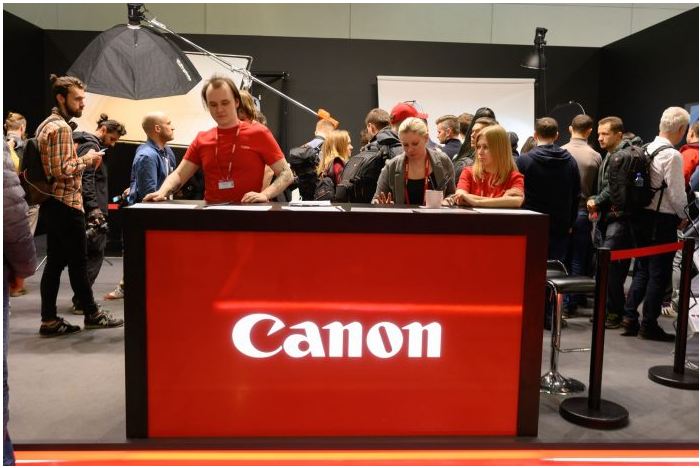
In an interview Canon representatives, clearly told photo.ru the real reason behind the 4K cropped mode of the Canon cameras and much more…
Major Points of the interview
1. Reason Behind Canon Cropped 4K video mode in Canon Cameras
Canon do not want Kill their Cinema Lineup by putting class leading video specs in DSLR or Mirrorless.
We can put 4K from a full frame in the SLR and mirrorless, but we do not want to “cannibalize” our own video segment.
2. Why Canon 200D II / SL3 / 250D have a weak video mode, cropped 4K without DPAF support ?
Canon entry level users can’t afford 4K editing software and hardware like Macbook Pro preferably with Adobe Premiere by subscription. So, they want to treat the 4K video mode as marketing feature only.
3. In next 5 years, they have a plan to announce High Resolution Mirrorless camera.
4. No clear answer given when asked about Canon announcement before Olympics
5. When asked about built-in image stabilization inside Camera Body
We already have three patents on IBIS – on a mobile matrix and stabilization, Canon is currently developing a matrix stabilization technology – it will be coming soon. Other companies had a huge amount of problems with this. They test it essentially on users.
Fortunately here at thenewcamera.com we have published three different patents of Canon working in built-in image stabilization system See patent 1 | patent 2 | patent 3
Detailed Part – Translated Interview
….do not digest the marketing policy of the company. Why, for example, in one of the new C anon cameras – neither in the flagship, nor the middle or entry level, is it not possible to record 4K video without a crop? The company is technologically unable to carry out this task?
– We did not set such a function intentionally. We have a series of Cinema EOS – movie cameras. Canon separates EOS R and Cinema EOS from each other. This series is aimed at shooting a professional video. Camera Canon C700 – there certainly is 4K from the whole frame.
We can put 4K from a full frame in the SLR and mirrorless, but we do not want to “cannibalize” our own video segment.
………
The new Canon 250 D camera couldn’t be able to drag Cinema EOS users to yourself if you gave it Dual Pixel autofocus in 4K and at the same time read it without an additional matrix.
– 250D is an Entry segment camera. We all know that in order to process 4K, on the one hand, in addition to the camera that can shoot it, there must be a computer that will be able to live through it, mount it and render it. Macbook Pro preferably with Adobe Premiere by subscription for 1500 rubles per month. How many entry-level camera users have this extra equipment? Probably not enough. Negligible. Therefore, I would treat 4K in the Entry segment as a marketing feature, which is nice to see with the eye on the box, on the price tag, and buy a 4K camera and never use it.
What is the resolution of the RF lenses?
– We learn in 5 years.
Could it be that the company is already testing a new camera, which will later be announced, for example, before the Olympiad?
“I’m sure Canon is already developing next-generation cameras, because testing usually starts at least a year before the camera enters the market.”
And when does testing end?
– A few months before the camera announcement. We have a very serious program of ambassadors, a very tough selection. Canon has the whole EMEA region – the whole of Europe, the whole of Africa, the Middle East and Russia – only 40 people. These are people with publications, participants of professional exhibitions of various genres, people who have really proved their professionalism, and we are working with them on testing
Why is the matrix stabilization not developed yet?
– We already have three patents on IBIS – on a mobile matrix and stabilization,
but we continue to work on them. Canon never uses technology that has not yet been tested. It took us so much time, because the technology itself requires a very detailed study, because the moving matrix is good, on the one hand. On the other hand, go to any service and ask how many cameras they have there with broken moving dies. The stabilization system is a very fragile thing.
Canon is currently developing a matrix stabilization technology – it will be coming soon. Other companies had a huge amount of problems with this. They test it essentially on users. Why do they have stabilization on almost all lenses? Because the matrix is not very effective.
Help us Directly We are at Patreon
Get Your Products through our affiliates – Amazon | B&H
Stay with us on FACEBOOK | TWITTER | INSTAGRAM to get live news + Canon rumors 24X7
source Photo.ru
By admin, on May 21st, 2019
We are having Canon 32MP DSLR Rumor for a while. Some rumor mills are claiming that it’s Canon 90d or 7D Mark III camera.
Let’s talk about the set of of authentic information we have related to Canon professional APS-C DSLR camera.
The only state of reliable information we have is Canon is testing a camera 32 megapixel sensor and a battery which is found inside the Canon 7D series camera on the Canon 5D Mark 4 camera.
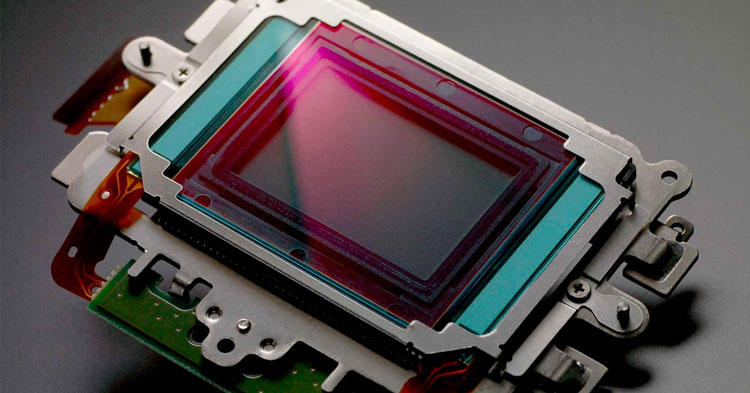
Canon 32MP DSLR – Initial Confirmed set of specification
- Digital SLR
- Wifi and Bluetooth 4.1
- LP-E6N battery
- 6 level battery display, similar to the EOS 5D Mark IV
- Maximum image size: 6960 × 4640, 32MP
- This will likely be a 2019 release
It’s very clear indication that Canon is testing a professional APS-C DSLR camera, now it all depends upon Canon marketing time which professional body they choose (Canon 7D III or Canon 90D ) for the introduction of the new 32 megapixel dual pixel auto-focus sensor. Most probably they can prefer the Canon 90d camera or they can choose Canon 7D Mark III for the introduction of their new sensor.
Let’s talk about the possibilities and let’s try to think in canon way.

Canon 7D Series Announcement Timeline
Canon 7D – Aug 31, 2009
[10, 11, 12, 13, ] (Years of gap)
Canon 7D Mark II – Sep 15, 2014
[15, 16, 17, 18 ] (Years of gap)
Canon 7D Mark III – Scheduled Release Date 2019
As you can see the Canon is keeping four years of gap in 7D series camera. And the schedule update time of 7D series camera falls somewhere around Q3 and Q4 of 2019.
Canon XXD Series Announcement Timeline
Canon 70D – Jul 2, 2013
[ 14, 15 ] (Years of gap)
Canon 80D – Feb 17, 2016
[17, 18 ] (Years of gap)
Canon 90D – Scheduled Release Date 2019
Now, as you can see Canon is keeping 2 years of gap in canon xxd series camera. Schedule update time of XXD series camera falls somewhere around Q2 and Q3 of 2019. So, more or less both Canon 7D Mark III and Canon 90D camera are waiting for their announcement based on scheduled update cycle of each camera.
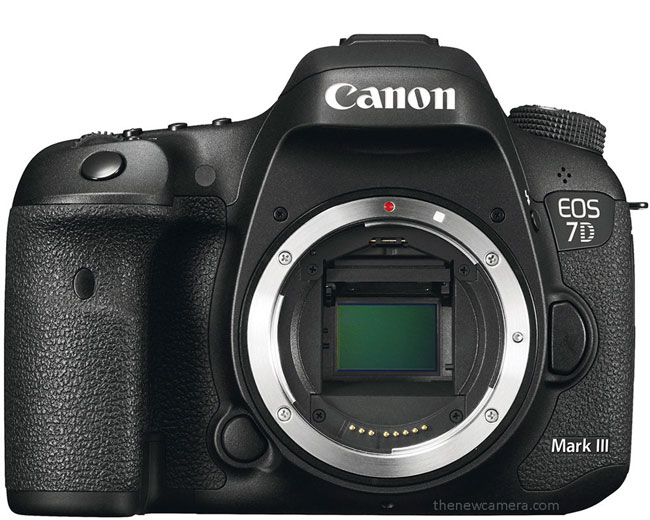
Canon 7D Mark III Coming first, If Canon moves in the same path…
We have seen what Fujifilm is doing with their Fuji XT x series and XTxx series. If Canon moves in the same path as of Fuji and Sony is moving, they will introduce their flagship camera first (aka Canon 7D Mark III) and after seven to eight months of gap once the sales number are reach to a desired level then they will going to introduce bit affordable body (Canon 90D) with some trim down specification, while having the same sensor and image processor to reach more number of peoples, those who are not able to afford the professional body with higher price tag.
Same with Sony, they have introduced the Sony A73 camera while having the same core specification of Sony A9 camera at an affordable price tag to reach more consumers out there, those who are not able to afford Sony A9 camera.
Canon EOS R – Sep 5, 2018 ($1999 at Amazon.com)
Canon EOS RP – Feb 14, 2019 ($1299 at Amazon.com)
Canon is also doing the same job, first they have planned to introduce the Canon EOS RP, and Canon EOS R camera all together at the same time, just like the Nikon Z6 and Z7. But, rumors suggest their marketing team decided to obtain a new route as of other mirrorless makers. And as usual, they have first introduced the Canon EOS R camera and after 5 months of gap they have introduced the Canon EOS RP camera with an affordable price tag.
So if you’re looking at the strategy of this mirrorless maker, their first intention is to generate profit and the second intention is to gain more market shares. – TNC
So, if Canon is moving in the new path, for sure we will be having our Canon 7D Mark III camera first and after 7 to 8 months of gap once the sales number of Canon 7D Mark III camera reached to desired level, they will going to introduce affordable 7D Mark 3 camera under the Canon 90d body.
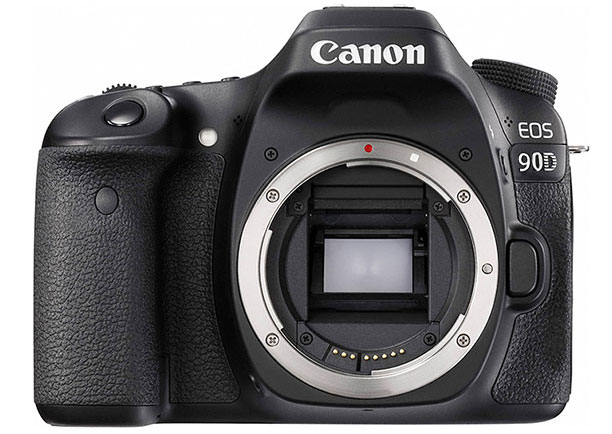
Forced Limits to Save-up Future Model Sales ?
Everyone knows Canon is bit popular in-putting forced limits in their camera. None of the Canon APS-C DSLR or mirrorless camera with dual pixel CMOS autofocus sensor is allowed to do AutoFocus in 4K, you can say allowed to use dual pixel CMOS autofocus technology while recording 4K video just to save the future sales about the upcoming flagship camera.
So if they have plan to introduce the Canon 90d camera first with 32 megapixel dual pixel autofocus sensor, for sure the camera will be having some forced limits inside to save the sales of Canon 7D Mark III camera.
Do share your thoughts with us
Check out Ongoing Featured and Lightning Deals at Amazon.com | Amazon.UK | B&H Store
Get LIVE RUMORS –> FACEBOOK | TWITTER | INSTAGRAM to get live news + Canon rumors 24X7
By admin, on May 20th, 2019
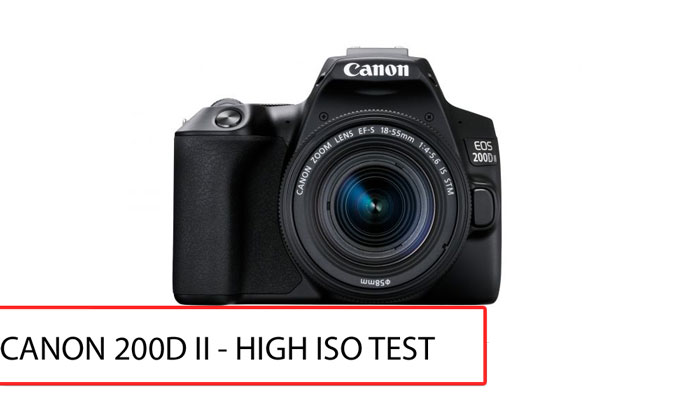
Canon SL3 / 200D II camera High ISO (via dpreview) test images are Let’s talk about the high ISO test of Canon SL3 camera and what we are able to observe through the test.
Canon SL3 RAW HIGH ISO Test
On RAW mode all the four camera (Canon SL3, Canon EOS M50, Canon 80D and Nikon D5600). After looking at the entire test, It’s very clear that Canon SL3 is controlling color noise slightly more better than Canon 80D or Canon EOS M50. But, the difference is very minimal and sometime it remains unrecognized. And finally we have Nikon D5600 camera with bit more better noise control than the other three camera.
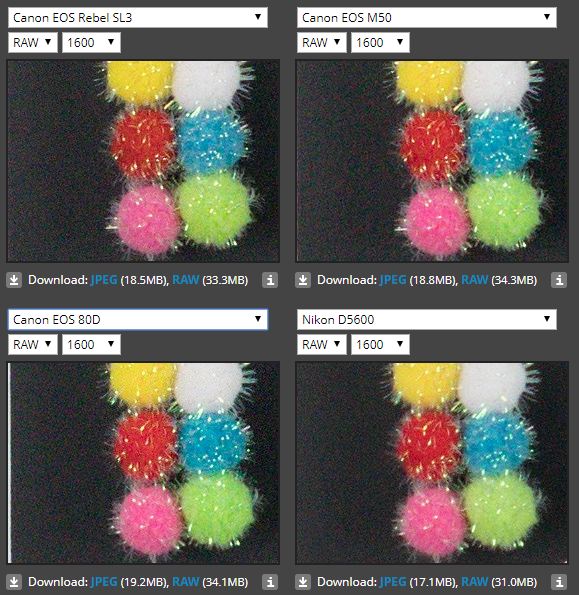
None of the camera producing usable image at ISO 3200. We have to do proper post-processing to make these camera files usable. AT ISO 3200 Canon 80D RAW file generating Maximum color noise compared to the other three, Nikon D5600 features minimal noise at ISO 3200. Canon 200D II / SL3 and Canon EOS M50 color noise level look similar.
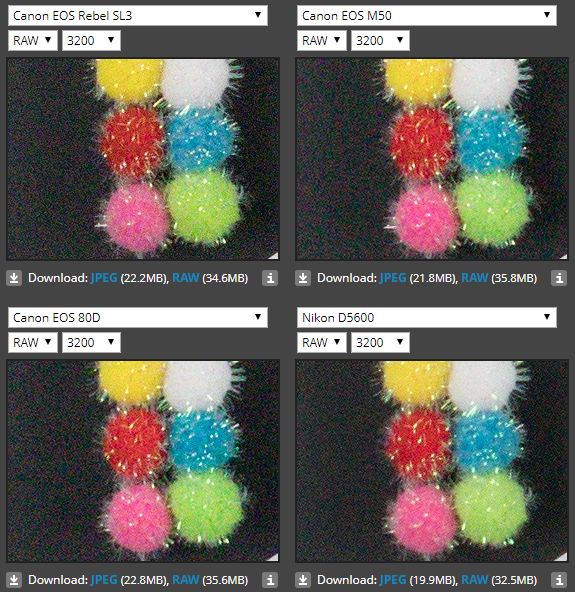
Canon SL3 JPEG File Test
JPEG High ISO Test Comparison, Canon 80D again showing more color noise in the group. At ISO 3200 Canon EOS M50 and Canon 200D II exhibit similar amount of color noise, Nikon D5600 image sample is bit more clean and usable.
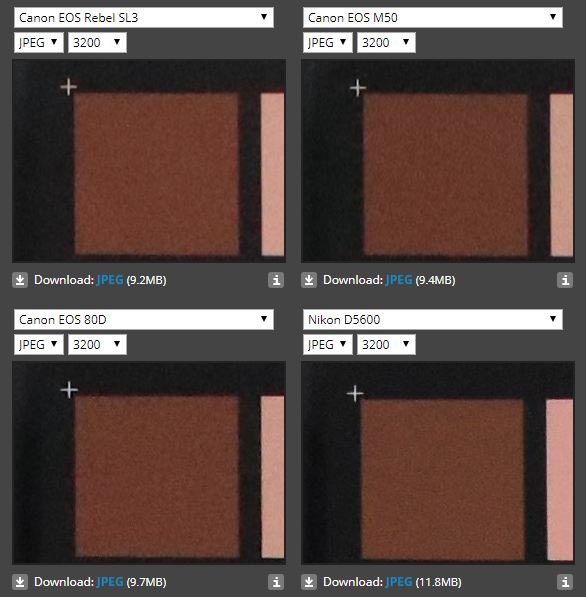
Canon 200D II / SL3 vs Others at ISO 6400 (MAX JPEG Usable ISO Limit)
ISO range in the specification sheet doesn’t matter, you have to look for usable ISO range in you camera. After looking at the High ISO JPEG files its look like usable ISO range in Canon camera is upto ISO 3200 and when you are having Nikon D5600 you can push it one-stop further upto ISO 6400.
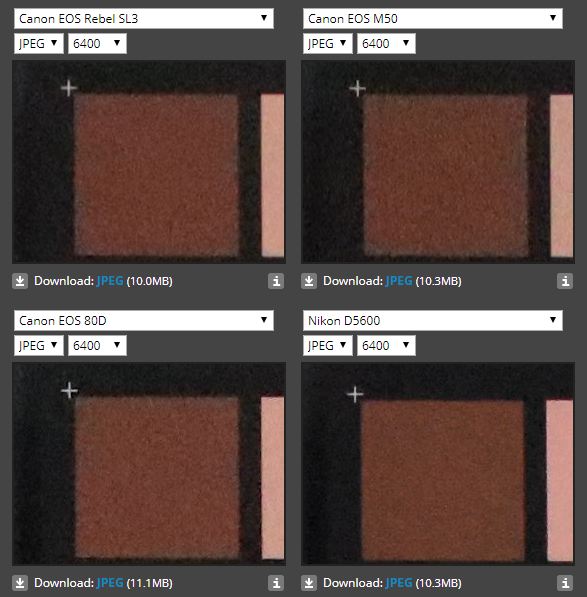
Buy Canon 200D II / SL3 camera from B&H Store
Also see – Best Lenses for Canon 200D II / Canon SL3 / Canon 250D
Follow Canon 200D II page at Facebook
For LIVE Canon SL3 News and Rumors follow us FACEBOOK | TWITTER | INSTAGRAM to get live news + Canon rumors 24X7
|
KEEP THIS BLOG ALIVE - Support New Camera Buy Canon Lenses, Buy Music CD or Digital Camera at amazon it helps this site, and you do not pay anything extra, it is just a way to help support this site.

|





















